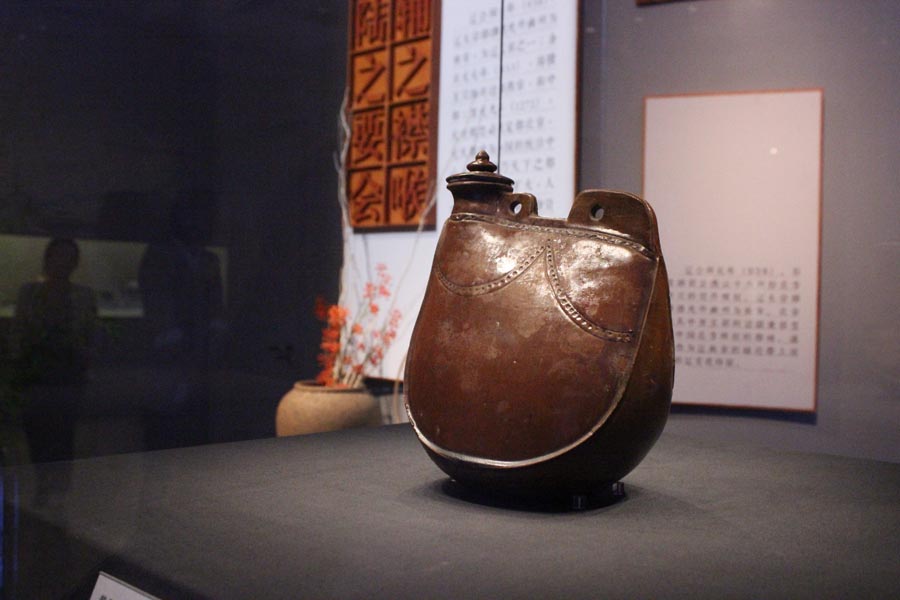 |
|
The exhibition of 169 displays at the Capital Museum in Beijing includes such items as a Qing Dynasty (1644-1911) map of the Grand Canal, and other cultural relics like daily items, pottery and construction materials. [Photo provided to China Daily] |
In 1329, as much as 3.5 million dan (a container that could hold about 75 kilograms) of rice was transported via the canal from southern China to Beijing.
In 2014, a section of canal in Tongzhou was put on the UNESCO World Heritage List.
Gao says that Tongzhou was a crucial link both during the Ming (1368-1644) and Qing (1644-1911) dynasties. And this is highlighted by some of the items on display like a plate used to weigh rice at Tongzhou's port.
There is a list of codes on display that shows there was a complicated system to check food quality and prevent fraud.
The Tongzhou District Museum also contributed some exhibits.
Zheng Xusheng, head of the museum, talks about a Qing map of the Grand Canal, from Beijing to Shandong province, from the reign of Yongzheng (1722-35).
According to Zheng, the map was taken to Japan during the War of Resistance Against Japanese Aggression (1931-45) but was brought back to China around 2000.
"You can still find many facilities that exist today on the map," he says.
The exhibition runs until July 23.